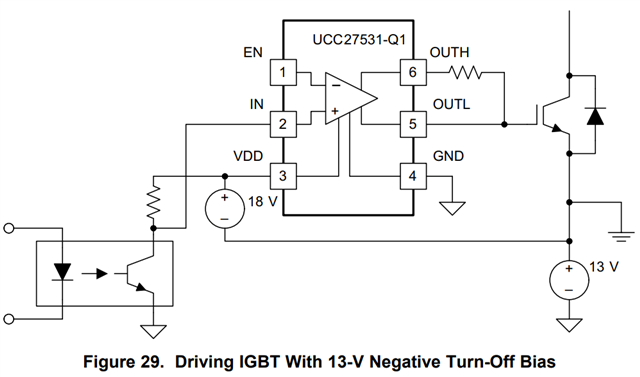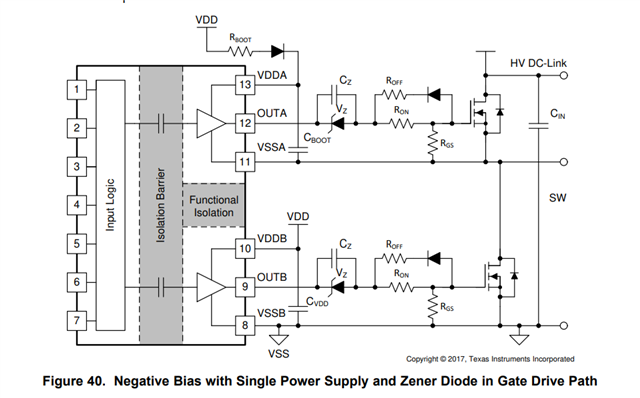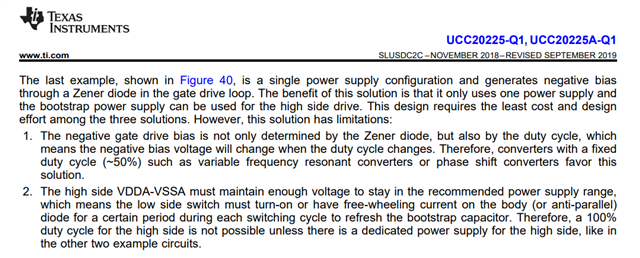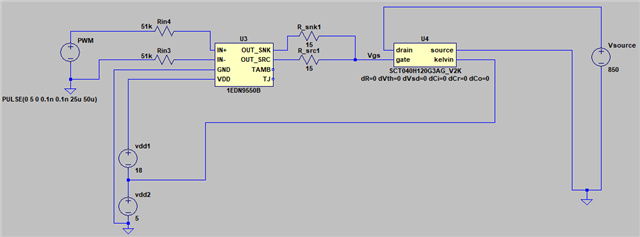Other Parts Discussed in Thread: UCC27614, UCC23513, UCC27532-Q1, UCC27624-Q1
Hi,
I am looking to drive the SiC Mosfet requiring -5V and 18V Vgs.
Also the sink current is 2.81A and source current is 2.56.
If I am not wrong, I can use this IC for the purpose, but IC source current is 2.5A. Do you have any IC with higher source current? Or do you think I can use the same IC for the purpose?
Also for driving at -5V, I am taking the following circuit as reference.

For this purpose, I will replace the 13V with a 5V supply but I do not understand the purpose of optocoupler at VDD?





